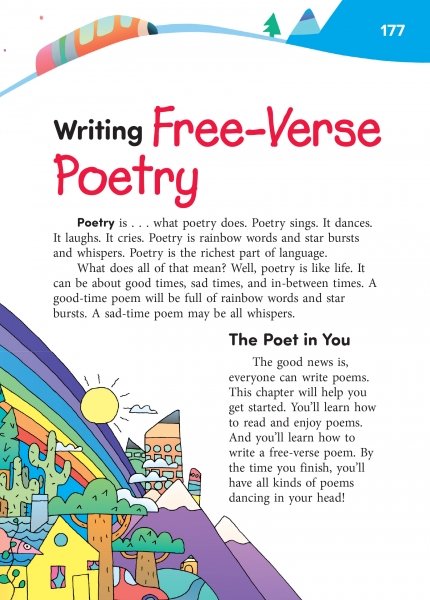Page 177 from

Start-Up Activity
Have a student read the first two paragraphs of this page aloud. Ask students how they feel when they read those words. Then have them study the illustration on pages 176–177. Ask how they feel when they look at the illustration. Have them say what they like most about the illustration.
Let students know that poetry paints pictures with words. Poems are full of beautiful details that invite the reader to linger and smile and think.
Then have a volunteer read the last paragraph on the page. Tell students that they will soon be inviting their own readers to join them in the world of their own poems.
Think About It
“Painting is silent poetry, and poetry is painting with the gift of speech.”
—Simonides

Start-Up Activity
Have a student read the first two paragraphs of this page aloud. Ask students how they feel when they read those words. Then have them study the illustration on pages 176–177. Ask how they feel when they look at the illustration. Have them say what they like most about the illustration.
Let students know that poetry paints pictures with words. Poems are full of beautiful details that invite the reader to linger and smile and think.
Then have a volunteer read the last paragraph on the page. Tell students that they will soon be inviting their own readers to join them in the world of their own poems.
Think About It
“Painting is silent poetry, and poetry is painting with the gift of speech.”
—Simonides

